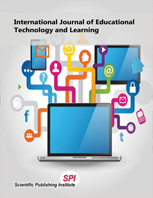Teachers’ Perception of Factors Affecting Integration of Information and Communication Technology for Instructional Purposes in Secondary Schools in Kenya
DOI:
https://doi.org/10.20448/2003.81.25.37Keywords:
Teachers, Self-efficacy, Attitude towards computer, Social influence, Constructivist beliefs, Secondary school, ICT integration.Abstract
This research determined the perception of secondary school teachers on the effect of teacher-related factors on the integration of information and communication technology (ICT) for instructional purposes. The study was conducted in 40 secondary schools of the North Rift Valley region of Kenya that had computers. Likert-type scale for each technology acceptance variable (Computer self-efficacy, teacher efficacy, attitude towards computer, Social influence, and Constructivist beliefs) was developed/ adopted for the study. These scales were established to have adequate reliability through a pilot study. Usable data from 400 respondents was collected and used to test the hypotheses. T-test, ANOVA and Fisher’s LSD post hoc analyses were conducted on the data collected using SPSS version 20.0. The results show that voluntariness and computer experience were the two main variables that determined teachers’ perception of factors affecting the integration of Information and Communication Technology for instructional purposes. On the other hand, subject specialization, gender and teaching experience had marginal or no significant influence on teachers’ perception of factors affecting the integration of Information and Communication Technology for instructional purposes. Therefore, it should be understood that a number of factors interact to produce a significant effect on ICT integration in pedagogy.


